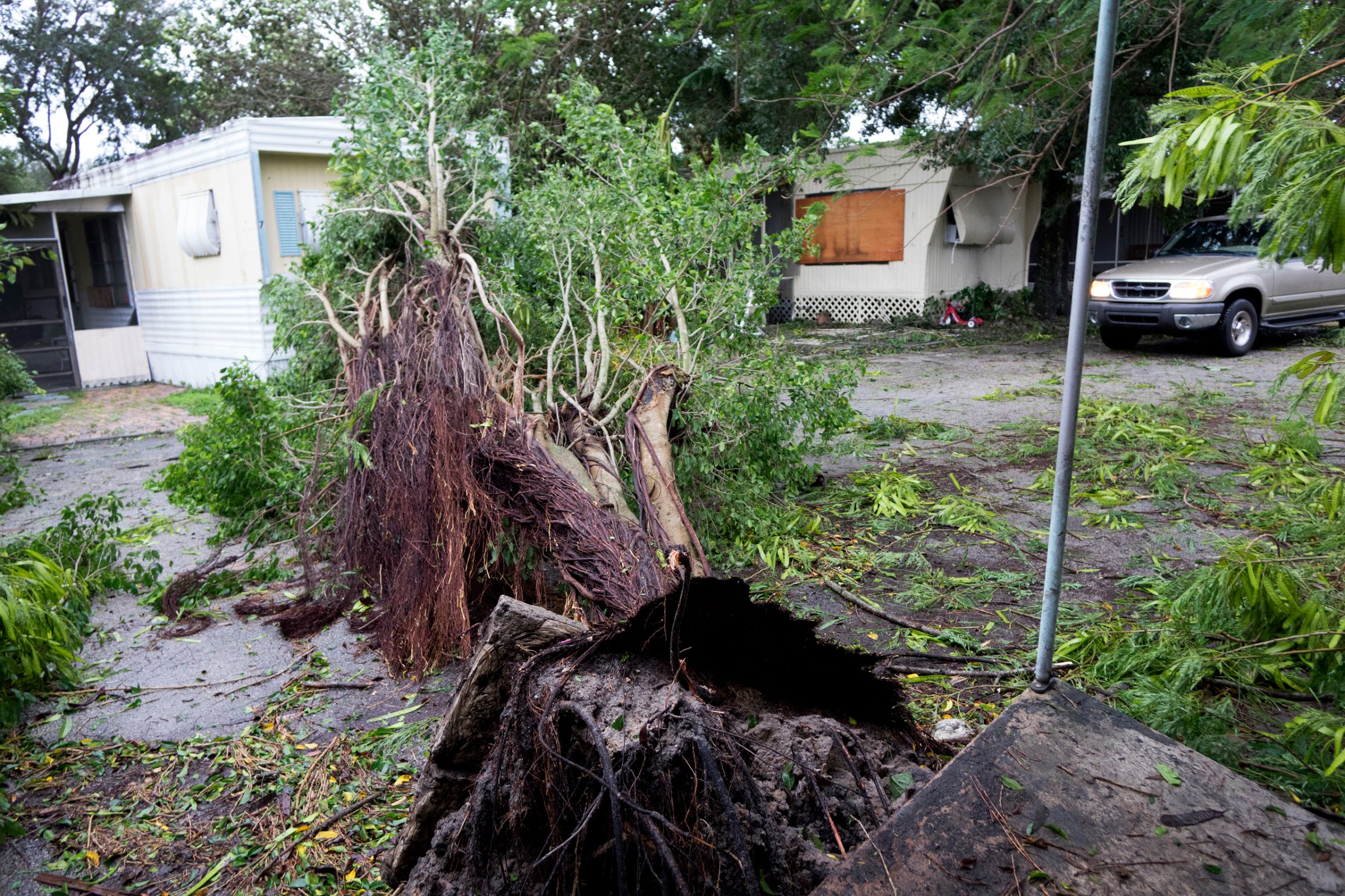
Even before Hurricane Matthew began unleashing its forces on the southeastern U.S., more than 100,000 people remained displaced from their homes because of destruction wrought by extreme weather events. These numbers are growing.
Amid demands from activists that governments and aid organizations take stronger measures to address climate change and prepare better for the next disaster, it is time to acknowledge the simple truth that this crisis does not impact everyone equally—and neither should our strategies for addressing it.
Low-income communities and communities of color are on the front lines of the damage climate change has already caused, and they continue to face the brunt of the assault. From Hurricane Katrina in the Gulf Coast to Superstorm Sandy in the northeast, time and again people of color in low-income communities are the first victims of extreme weather and the last to recover from its devastation.
According to Gallup African American and low-income people were more likely than whites and high-income people to suffer from Hurricane Katrina, and one-year after Hurricane Sandy across the tri-state area, a greater share of low-income households was still contending with unrepaired housing damage compared to those with greater means.
As Hurrican Matthew strikes and the fourth anniversary of Sandy approaches, now is an opportune time to consider that this vulnerability and neglect is no accident. It’s systemic, with human and economic costs that impact every one of us: Katrina was the most expensive, and among the deadliest, natural disasters in U.S. history while Sandy was the second costliest hurricane. It is not simply coincidence that people of color and low-income families live in low-lying areas or communities with crumbling, weakened infrastructure.
This situation was created and institutionalized by discriminatory housing policies that limited where people of color could live through zoning policies, restrictive covenants, racial steering and many other tools that were often explicitly racist, always with the intent to keep people of color confined to certain areas. For example, the creation of the Federal Housing Administration during the New Deal helped millions of families purchase homes, but the policy of redlining ensured that most beneficiaries of government-backed mortgages were white—and that was just the tip of the iceberg.
Today, most of our cities remain incredibly segregated by race and class. Low-income communities and communities of color are more likely than predominantly white communities to be in or near vulnerable areas like flood plains or toxic waste facilities. People of color are also more likely to live in neighborhoods that have faced decades of disinvestment, making it harder to withstand the effects of climate change and nearly impossible to bounce back after a disaster.
The need to better prepare for climate change is well documented. But a critical part of that must include addressing the disparities in wealth, infrastructure and access to opportunities too many people and families continue to face. And it must include specific policies and programs that correct the discrimination and disinvestment that put low-income communities of color in the most danger in the first place.
While this seems daunting, we know how to get started. Consider New Orleans. After Hurricane Katrina and the flooding that followed devastated the Tremé-Lafitte neighborhood, there were hard decisions to make about how or whether to rebuild. As plans for demolishing and rebuilding a large public housing complex were announced, the community was rightly concerned about the potential for permanent displacement of hundreds of low-income families who had called the neighborhood home for decades. A deliberate focus on tracking down residents who had evacuated to at least 35 different states, involving them in the design and planning of the new development – including holding planning meetings in cities with a high concentration of evacuees – and providing access to short-term emergency assistance slowed down the rebuilding process, but it also created significantly better outcomes.
Eventually, residents banded together and worked with government, investors, local groups and more to rebuild a healthier, more resilient mixed-income community, with long overdue infrastructure improvements connecting it to hospitals, quality schools, fresh food and a new greenway. The recovery effort was far from perfect, but the experience of addressing issues that existed before the storm and involving the community in the planning process created a model that other regions can adapt and improve upon.
More than anything else, cities at risk in the face of climate change—like San Francisco, New York, Miami Beach and countless regions in between—must take these lessons into account and act to increase resiliency against the effects of extreme weather events before the next storm strikes.
The costs of waiting are far greater than the resources it would take to protect vulnerable communities by acting now. A report by the National Institute of Building Sciences found that every dollar spent on mitigation saves $4 in recovery costs. And beyond dollars spent, a failure to change the status quo that harms low-income communities and communities of color means that patterns of disproportionate impact will persist and disparities will continue to grow.
With the political and institutional will and enough resources, we can ensure that these communities are no longer the front lines of vulnerability, but the front lines of resilience.
More Must-Reads from TIME
- Why Trump’s Message Worked on Latino Men
- What Trump’s Win Could Mean for Housing
- The 100 Must-Read Books of 2024
- Sleep Doctors Share the 1 Tip That’s Changed Their Lives
- Column: Let’s Bring Back Romance
- What It’s Like to Have Long COVID As a Kid
- FX’s Say Nothing Is the Must-Watch Political Thriller of 2024
- Merle Bombardieri Is Helping People Make the Baby Decision
Contact us at letters@time.com